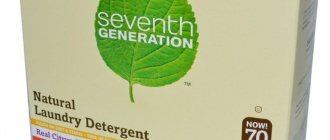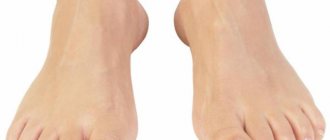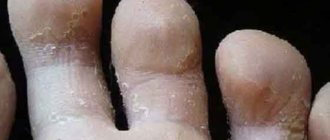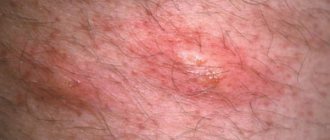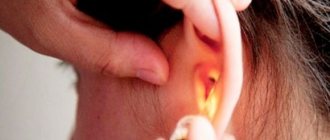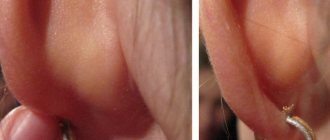Solar lichen is an infectious disease. Characteristic signs of the disease are flaky pigment spots on the skin. This lichen is a seasonal disease, and fungal bacteria reach a particular peak of activity in the spring and autumn. The risk category includes men and women under thirty years of age.
Solar lichen can be transmitted from a sick person to a healthy person only through close, prolonged contact . For the development and progression of the disease, the body must have a favorable background and predisposing factors.
Beach disease - sun lichen
This is a chronic fungal disease, which is characterized by a rash of spots of various shades. The pathology received its name due to the increase in the number of patients during the spring-summer period. The disease affects young men and women (mostly under 28-30 years of age). The pathology is popularly called sun fungus, since the stratum corneum of the epidermis is affected by pathogenic fungi called Pityrosporum and Malassezia.
The disease is not contagious. The pathogen is transmitted from a sick person to a healthy person only through close and prolonged contact.
Varieties and atypical forms
Beach sickness manifests itself in the form of discolored areas of skin against the background of a general tan.
The spots can be of varying sizes, from a few millimeters to several centimeters. In rare cases, the disease may begin to manifest itself during the cold season. Slightly pink spots with shiny edges appear on the skin; after receiving the first tan, they become lighter against the background of the entire skin.
https://www.youtube.com/watch?v=qH6Zs_HDGVs
In rare cases, atypical places of formation include the head, the occipital part, and sometimes the lower extremities. If left untreated, the spots may change color from white to dark brown, and mild itching may occur, but this is more an exception than a typical manifestation of beach fungus.
How it manifests itself: localization locations
Externally, lichen resembles pigmentation of the epidermis. The affected areas in the initial stage of development are not much different from healthy skin, but as soon as the disease begins to progress, the color of the rash may acquire a brown, yellow, pale pink or brown tint. For this reason, the pathology is also called tinea versicolor.
The spots are not accompanied by an inflammatory process and do not rise above the surface of the skin. There is also no pain, itching, discomfort or swelling. During exposure to the sun, when the skin gradually begins to tan, pigmentation does not respond to sunlight, so in summer it becomes very noticeable.
Most often, the fungus affects:
- breast;
- back;
- neck;
- sides;
- stomach.
In babies, rashes can appear in the armpits, on the limbs and even on the scalp.
Diagnostics
Before thinking about how and how to treat solar lichen, it is necessary that this diagnosis be established by a dermatologist. Just comparing your own symptoms with the described signs or photos is not enough: vitiligo, syphilitic leukoderma, or pityriasis rosea may look similar. Therefore, contact a dermatologist who will make a diagnosis based on:
- inspection with the naked eye;
- examination under a Wood's fluorescent lamp (for fungal diseases, including sunburn, the affected areas will glow yellowish);
- tests with iodine (according to Balzer): after treatment with iodine, the affected areas will be darker than healthy skin;
- definition of Besnier's symptom, which is determined by scraping the affected areas with a glass slide: the skin on top will be scraped off like shavings;
- stain scraping analysis;
- Wasserman test or RPR test - to exclude syphilis.
How to quickly get rid of sunburn at home
When a diagnosis of “solar lichen” is made, the patient will be prescribed antifungal medications and ointments for external use. The course of therapy usually lasts until the visible symptoms disappear.
Medicines
First of all, you will need to purchase antimycotic ointment on the recommendation of a dermatologist. Treatment of sun fungus with external preparations brings a positive effect and does not cause side effects. Apply only to affected areas.
Antimycotics for external use:
- Lamisil;
- Naftifin;
- Clotrimazole;
- Ciclopirox;
- Bifonazole;
- Mycozoline;
- Sulfuric ointment;
- Terbinafine.
It is recommended to use the antimycotic a couple of times a day (more precise instructions will be given by your doctor). Treatment usually ends after 2 weeks. In addition, the lesions can be wiped with sea buckthorn oil.
In addition to ointments, you can use a spray, which should be sprayed onto the affected skin 2-3 times a day. Most often, doctors recommend Miramistin. The drug is quickly absorbed and, unlike ointments, does not leave a greasy residue.
During treatment, you will need to take a course of vitamins, since the development of solar lichen indicates a decrease in the protective forces of the immune system.
Tablets are prescribed in situations where topical medications do not bring the desired results. To suppress the activity of the pathogen, a dermatologist may prescribe the following medications:
- Itraconazole It should be taken orally after eating without chewing the capsule. The course of treatment is 3 months at 200 mg/day.
- Cycloserine. The drug is used to restore melanin in the skin. Take 250 mg (one capsule) twice a day (on an empty stomach).
- Orungal. The capsule must be swallowed immediately after finishing a meal with plenty of water. Recommended dosage: 2 capsules 1 time per day. The course of treatment lasts a week.
- Fluconazole. The medicine is absorbed into the blood, so it acts quickly. The appointment lasts 2 days. Take 1 capsule per day.
You should not self-medicate and choose the drug yourself. When the first signs of sun fungus appear, you should seek professional advice from a dermatologist.
Treatment with folk remedies
Home treatment using folk remedies is an integral part of drug therapy.
But in order not to weaken the effectiveness of the ointment, the method of home medicine must be agreed upon with a doctor. Working methods:
- Pour a cup of boiling water over 1 tbsp. chopped sorrel. Boil for a few minutes, let cool to room temperature and wipe the affected skin. It is better to use wild sorrel.
- Every 3 hours you need to lubricate the pigmentation with apple cider vinegar. To avoid causing redness or burning, you should first conduct a skin reaction test.
- It is recommended to apply rosehip oil to rashes 2-3 times a day. Also, to strengthen the immune system, you need to drink a decoction of the berries of this shrub.
- Tar soap accelerates regeneration and suppresses the development of fungus. Divide the block into 5 parts, grate one of them on a fine grater. Pour in enough boiling water to make a thick paste. The warm mass is applied to the rash, kept for 10-12 minutes and washed with warm water.
Traditional methods have been used since ancient times. They are absolutely safe for health, and their effectiveness will be noticeable after just a few procedures.
Reasons for the development of beach mycosis
Most experts agree that the reason why foci of sun fungus (or lichen) appear on the body is due to colonies of mycotic microorganisms of the genus Pityrosporum and Malassezia.
All three forms are yeast in nature and are capable of changing and transforming into one another. A favorable environment for their development is high temperature and humidity, so most often they “attack” people prone to excessive sweating.
Sometimes you hear that sunworm is not contagious and does not need treatment. However, this opinion is incorrect - it is necessary to treat beach fungus, and contacting a dermatologist is mandatory.
Although the disease does not seem to cause unpleasant physical sensations, aesthetic discomfort is experienced by both the infected themselves and those who communicate with them.
At the same time, the contagiousness of the disease is very low, and in order to “catch” it, contact with the patient must be close and prolonged.
But even in this case, this may not happen if there are no additional conditions for the development of pathology, including:
- Low immunity.
- Excess weight.
- Diabetes.
- Self-medication with antibiotics.
- Constantly wearing clothes and underwear made of synthetic fabrics.
- Excessive doses of ultraviolet rays.
- Abuse of sunscreen.
It is because of the last two provoking factors that the disease received the name solar, or beach fungus.
Main symptoms
External signs of the disease include:
- multi-colored spots of irregular shape with clearly defined edges, which are usually located on the chest, stomach or back;
- insensitivity of the skin in the areas of the outbreaks to the sun's rays - they never sunbathe;
- small particles of dermis, crumbling from their surface even with weak friction.
The infected person does not experience itching or pain. There is also no inflammation. If such signs appear, the cause is not lichen, but secondary infection of the epidermis with other pathogenic agents.
If these signs appear, you should definitely contact a specialist. Firstly, if therapy is started in a timely manner, treatment of sunburn does not present any problems.
Secondly, some of its symptoms have signs similar to skin diseases of non-mycotic etiology: for example, “non-tanning” lesions are characteristic of vitiligo, a non-contagious hereditary disease that causes disruption of the normal pigmentation of the epidermis.
note
Only a professional can make a diagnosis with absolute accuracy and prescribe the correct treatment. To do this, he has many modern methods at his disposal.
Diagnosis of pityriasis versicolor is carried out in several ways:
- Irradiation with a Wood's lamp.
- Balser's iodine test.
- Examination of skin samples under a microscope.
- Bacterial inoculation on Sabouraud's medium.
- PCR diagnostics.
When using the first method, the study is carried out in a dark room. Skin affected by the fungus takes on a reddish-yellow, greenish-blue or brown tint in the rays of a fluorescent lamp.
Taking a skin test for solar lichen is not difficult: just lightly rub the affected epidermis, and small scales resembling bran begin to fall off (hence the second name - pityriasis). By placing them under a microscope, a laboratory technician can easily determine the presence of fungus.
Sabouraud's bacterial culture not only helps to prove the fact of fungal skin infection, but also to check the effect of certain medications on spores.
The polymerase chain reaction allows you to determine the type of pathogenic microflora based on the analysis of its DNA.
Methods of therapy
Treatment for pityriasis versicolor should be carried out only as prescribed by a doctor and under his supervision. Treatment of “sunflower” consists mainly in the use of local, i.e. external medications. These include various creams, ointments, solutions, lotions, and sprays.
Most often prescribed:
- Ketoconazole;
- Bifonazole;
- Fluconazole;
- Thermikon;
- Fungoterbin;
- Mycoseptin.
They are applied to the affected areas 1-2 times a day. When taking a shower, it is recommended to use Nizoral medicated shampoo. All these remedies are very effective in combating sun fungus.
Here are just a few time-tested recipes:
- Crush frozen viburnum berries. Strain out the seeds and skins and add an equal amount of water. Make compresses from gauze soaked in juice in the mornings and evenings for 40 minutes.
- Lotions made from celandine infusion. 1 tbsp. l. herbs pour 0.5 liters of boiling water. Leave for half an hour. Apply lotions to sore spots twice a day.
- Lubricating the lesions with onion juice, grated and squeezed through cheesecloth. Repeat three times during the day.
- Grate 200 g of raw beets, or pass through a meat grinder. Squeeze, let sit for 2-3 hours, add the juice of 1 large lemon. Dilute everything with a glass of cold boiled water. Drink 50 ml three times a day after meals.
As a rule, pityriasis versicolor responds well to treatment, so the prognosis in most cases is favorable. However, if provoking conditions occur, relapses are possible.
Sun fungus is also called: sun lichen or beach sickness. This is a skin disease that is infectious in nature. Small foci of hyperpigmentation appear on the patient’s skin, and peeling of the epidermis is observed. Most often, solar lichen occurs before the age of 30. Many doctors claim that the disease develops in the hot season, as well as under the influence of ultraviolet rays.
Every person should understand that it is almost impossible to become infected from a carrier of this disease, because a fungal infection does not develop without accompanying factors.
Causes:
- As mentioned above, it most often develops against the background of prolonged exposure to sunlight. At this moment, the acid balance on the skin is disrupted. This violation contributes to the active proliferation of the fungus.
- Sun fungus occurs against the background of increased sweating.
- With a weakened immune system.
- If a person often visits a solarium.
- Against the background of frequent colds.
- When wearing synthetic underwear for a long time.
- Solar fungus can occur if a person has a history of diabetes, vegetative-vascular dystonia, or obesity.
- Overuse of sunscreen.
- Hormonal diseases.
- Transmitted through sweat from an infected person.
In addition to these reasons, it should also be noted that solar fungus can occur against the background of long-term use of antibacterial drugs.
It should be noted that the causative agent of the infection is a fungus from the genus malassezia. Such fungi are part of the natural microflora of the epidermis. As soon as favorable conditions arise, they begin to actively reproduce.
Clinical picture
The first signs of the appearance of sun fungus include small spots on the epidermis. At the initial stage of the disease, the spots differ in color from healthy skin.
As the disease progresses, the spots begin to increase not only in size, but also in number. In rare cases, a merger occurs into one large formation. If not treated promptly, sun fungus can occupy a large area of the skin.
We suggest you familiarize yourself with what causes warts on the body, arms and legs
In childhood, the disease occurs on the arms, legs, scalp, and also in the armpits.
In order to make a correct diagnosis, several diagnostic methods are used. First of all, the patient is interviewed and anamnesis is collected, this will help to find out the preliminary cause of the disease.
Irradiation with a Wood's lamp is mandatory. The procedure takes place in a dark room, the affected area is irradiated with the rays of a fluorescent lamp. As a result of this, the affected areas acquire a reddish-yellow or brown tint. This diagnostic method is effective in the early stages of the disease.
If necessary, diagnosis is carried out using the Balser method. The doctor lubricates the affected areas with iodine solution and then wipes it with alcohol. The affected areas of the skin quickly absorb iodine, resulting in dark brown spots.
Important
An area of the affected epidermis is taken and examined under a microscope. This diagnostic method allows you to quickly determine not only the presence of fungus, but also its type.
In order to establish the type of pathogenic microflora, a polymerase chain reaction is mandatory.
Local therapy is prescribed, as well as traditional methods of treatment. Solar fungus requires an integrated approach, so the patient is additionally prescribed restorative medications.
Local treatment
Clotrimazole ointment is prescribed. The drug belongs to the antimicrobial agents of the group of imidazole derivatives. The main principle of action of the drug is aimed at disrupting the synthesis of ergosterol. Clotrimazole can be used to treat mold fungi, including fungi from the genus Candida and Malassezia furfur.
The drug is intended for external use, apply a thin layer 2-3 times a day. In order to get rid of sun fungus, you need to use Clotrimazole for 3 weeks.
Contraindications for use: do not use during the first trimester of pregnancy, as well as in case of hypersensitivity to the main components.
Terbinafine cream has worked well for this disease. The main component of the drug is terbinafine hydrochloride. Therefore, the drug is active against almost all types of fungus. The main principle of action of Terbinafine is aimed at destroying the membrane of fungal cells.
In treatment, you can use a cream or tablet form of the drug. Before use, carefully study the instructions, as there is a wide list of contraindications.
How to treat solar lichen in children
Often children also get sick with sun fungus. Therapy also involves the use of ointments, creams or sprays, and in advanced stages of the disease you will need to take antifungal tablets.
TOP safe products
There are medications that can be used in children with the causative agent of the disease. They have virtually no side effects, which is why they are recommended by dermatologists.
Let's consider the safest means:
- Bifonazole (1%). The ointment is approved for children from 1 year of age. Apply twice daily for 3 weeks.
- Sulfuric ointment. Used in the early stages of lichen. An absolutely safe product that should be applied to cleansed skin once a day.
- Salicylic ointment. Also recommended at the initial stage of the disease. Use once a day.
- Tar soap. A paste made from water and a small piece of soap can be used 2 times a day.
- Spray Clotrimazole. The duration of therapy is 30 days, spray on the affected areas 2 times a day.
- Nystatin ointment. Apply to previously cleansed and dried skin twice a day for 7 days.
- Viferon. These are rectal suppositories aimed at strengthening the immune system and fighting pathogens. Use 1 suppository 2 times a day for 13-14 days.
- Ketoconazole. Tablets are allowed for children from 2 years of age. The recommended dose is 100 mg/day. The medicine is strong and is used in advanced cases.
For infants, treatment should only be carried out under the supervision of a physician. Therapy includes safe ointments (for example, zinc or salicylic), taking antiallergic drugs (for example, Fenistil) and vitamin complexes, as well as regular care for the affected skin.
Diagnostic methods of pathology
Diagnosis of solar fungus is carried out by a dermatologist during the initial examination. To confirm the preliminary diagnosis, the following activities are also carried out:
- Balser iodine test;
- irradiation with a Wood's lamp;
- bacterial culture on Sabouraud's medium;
- examination of skin samples under a microscope;
- PCR diagnostics.
Important!
Most often, the disease is diagnosed in people aged 25 to 35 years, but older people and young children can also become infected.
Prevention
To get rid of sun fungus or prevent its development, you need to follow simple preventive rules.
Among them:
- avoid overheating in the sun;
- It is better to sunbathe in the morning (8.00-11.00) and evening (17.00-19.00) hours;
- use safe tanning creams;
- sunbathe in diffuse shade;
- avoid visiting the solarium;
- wear clothes made from natural fabrics (linen, cotton);
- be less nervous;
- disinfect clothes after washing (boiling in soda solution);
- Everyone should have personal hygiene products (washcloth, soap);
- do not neglect the rules of hygiene.
There is no need to try to get a rich tan on the first day of your vacation. Tanning should be done gradually. This is the only way to prevent the development of the disease.
Solar lichen can be easily defeated if you seek qualified help in a timely manner. Modern medicine has in its arsenal a lot of effective drugs that are aimed at suppressing the development of the pathogen.
Folk remedies
In some situations, you can prepare special medicines to get rid of skin fungus using the following recipes at home:
- Sea buckthorn oil. Treat affected skin with undiluted product 2 times a day. You can add a few drops of healing oil to any nourishing cream and lubricate lichen spots. Sea buckthorn oil has a healing, soothing effect;
- Rosehip infusion. An excellent remedy that strengthens the immune system. Pour 2 tbsp into a thermos. l. fruits, pour in 0.5 liters of boiling water. After two hours, strain the infusion. Take half a glass orally twice a day. Some herbalists recommend treating spots with “sun fungus” with infusion; wild or horse sorrel. Finely chop a bunch of leaves and combine with a tablespoon of sour cream. Apply the paste onto the stains and wash off after 15 minutes;
- Apple vinegar. Only a high-quality product is suitable for treating lichen spots. Every three hours, wipe away any blemishes on your body with apple cider vinegar. Watch the reaction. If itching or severe peeling occurs, stop the procedure;
- Rosehip oil. Buy healing oil at the pharmacy. Apply to affected areas twice daily.
Despite the fact that a disease such as solar lichen does not cause serious consequences for the patient himself and is not dangerous for others, it must be treated immediately after detection. Otherwise, it will spread very quickly throughout the body and become a real disaster, especially for women.
Causes and provoking factors
Sun fungus appears as light spots on the skin
Sun fungus is harmless and non-contagious, but it can cause significant aesthetic discomfort, as it appears as light spots on the skin. The main reason for the development of sun fungus on the body is the excessive activity of the opportunistic microflora of the Malassezia species.
Malassezia is a yeast fungus that is always present in the human body, being part of the normal microflora. In addition to solar mycosis, this type of fungus causes seborrhea.
Activation of the fungus occurs under the influence of the following factors:
- endocrine disorders;
- decreased immunity;
- hyperhidrosis;
- vegetative-vascular disorders;
- synthetic clothing;
- overweight.
Decreased immunity becomes fertile ground for the exacerbation of various diseases. Against this background, various mycoses often appear, including solar fungus. Another common cause of Malassezia is hyperhidrosis or excessive sweating. Sweat is not just water, but a number of special compounds that create a breeding ground for yeast. Under these conditions, pathogenic microflora actively multiply and infect the epidermis. Obese people often face this problem, so excess weight is another predisposing factor.
Endocrine and vegetative-vascular disorders lead to a weakening of the protective function. This entails the development of various dermatological diseases, including sun fungus. Often, against the background of pathologies of the thyroid gland or liver, pigment spots appear on the skin. In the area around these spots, the protective function of the skin sometimes decreases, which can become an impetus for the development of fungus.
Another factor that determines the risk of developing mycosis is wearing synthetics in hot weather. In tight clothes made from non-natural fabrics, the body does not breathe. This fabric does not absorb sweat, so conditions favorable for the growth of fungus are created on the epidermis - damp, hot skin that does not receive enough oxygen. All this significantly increases the risk of developing the disease.
Possible complications of the disease
The occurrence of beach fungus usually does not lead to the development of serious complications or undesirable consequences.
However, if you do not engage in treatment, constantly touch the spots with dirty hands or scratch them, damaging the area affected by the fungus, there is a high risk of secondary bacterial infection.
Also, the condition of an infected person can be supplemented by eczema and the spread of infection to large areas of the skin.
Symptoms
You definitely need to know how this skin disease manifests itself. Knowing the main symptoms will help you quickly select the necessary medications for treatment.
Symptoms of beach lichen:
- A large number of spots with a round shape are formed on the surface of the body. Typically these spots have jagged, well-defined edges;
- Not accompanied by such characteristic signs as pain, swelling, redness;
- The spots have a coffee, yellow, pinkish-brown, milky tint;
- After a certain time, the spots grow, merge, increase in size and become the same size as a human palm;
- When friction is applied to the surface of the skin, peeling of skin particles may occur.
Important! It is worth noting that the presence of burning, itching, redness, pain in the area of multi-colored formations is not the main signs of solar fungal infection. These signs indicate that negative organisms have entered the skin.
Treatment
Solar lichen is a disease of young people and the likelihood of relapse is high. When a dubious spot appears on the body, it is extremely important to identify the cause and consult a dermatologist.
You might be interested! Ringworm in children: types, first signs and treatment
Treatment is complex and long-term with the prescription of medications, antifungal ointments, creams, and gels. Doctors do not advise self-medication. Relapses are possible when affected by a fungus, or the addition of secondary infections against the background of a malfunction in the immune system.
The treatment plan is approximately as follows:
- Rinse the affected areas with anti-dandruff shampoo (Sebozol, Dermazol, Nizoral).
- Lubricating problem areas with antifungal ointments (Miramistin, Terbinafine, Cyclopiroxolamine, sulfuric acid, salicylic acid, iodine, apple cider vinegar, salicylic alcohol 5%) every 3-4 hours.
- Taking multivitamins to strengthen the immune system
- Taking treatment with antifungal drugs in tablets for a comprehensive effect on lichen in combination with ointments, shampoos, and folk remedies. Antifungal drugs are also used in the treatment of lichen on the head of a child.
Types of treatment:
- Systemic treatment consists of taking medications to avoid relapses (Orungal, Itraconazole, Ketoconazole), also vitamins, immunomodulatory drugs.
- Local or external treatment with salicylic, sulfur ointment, resorcinol, salicylic alcohol, Cyclopirox, Lamisil, Mycozolon. First you need to wash your head or other problem areas with a special shampoo, only then apply an even layer of salicylic, resorcinol or other ointments.
What it is?
Sunburn is a disease caused by a yeast fungus. Such pathogens are called opportunistic pathogens because they are on the skin, but do not cause harm to it. Due to their nature, they can reproduce under favorable conditions: excessive sweating, hormonal diseases, chronic diseases.
There are 3 types of pityriasis versicolor, which depend on the fungus: Pityrosporum ovale, Pityrosporum orbiculare, Malassezia furfur. They move from one form to another.

